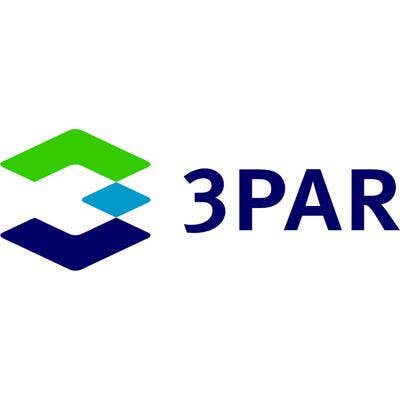The 10 Biggest Cloud Computing Stories Of 2010

Year Of The Cloud?
Many agree that 2010 was the year that cloud computing went from concept to reality. As Michael Cohn, founder of Atlanta-based solution provider Cloud Sherpas told CRN earlier this year: In 2010 the conversation changed from what the cloud is to what it can do for businesses.
And there was no shortage of cloud news throughout the year. Here, CRN takes a look at 10 stories that shaped cloud computing in 2010.

1. CA's Billion-Dollar Cloud Buy In
Perhaps no vendor stormed the cloud computing market with more force or more capital than CA Technologies. In 2010, CA made five cloud-focused acquisitions, which brought its total spend on six cloud computing companies to the $1 billion mark over a 14 month stretch.
In 2010, Islandia, NY-based CA bought cloud authentication player Arcot Systems for $200 million; 3Tera a platform for building and deploying cloud services; Oblicore, which offers service-level management applications; Nimsoft, which has a line of cloud application performance and monitoring tools; and 4Base Technologies, a cloud consulting and integration firm. Those five buys followed 2009's acquisition of data center and cloud utility software player Cassatt.
Add to CA's cloud spending spree its appointment of CA and channel veteran Adam Famularo as its managing director of cloud computing in September, and it's obvious that CA saw 2010 as the year of the cloud, too.

2. Larry Comes Around To The Cloud
After being an outspoken opponent to cloud computing, or at least to calling it cloud computing, throughout most of 2009, Oracle CEO Larry Ellison changed his tune at Oracle's OpenWorld conference in 2010.
At the show, Ellison unveiled Oracle's "cloud-in-a-box" offering that Ellison himself called "one big honkin' cloud." The Oracle Exalogic Elastic Cloud server combines 64-bit x86 hardware, a total of 30 compute servers with 360 cores, with Oracle middleware such as the WebLogic server, Oracle Coherence data grid software, JRockit Java runtime software and Oracle VM virtualization software.
The system can handle 1.8 million messages per second or 1 million HTTP requests per second and uses Infiniband technology (capable of handling 40 gigabits per second) to link its internal components, has 2.8 TB of DRAM, 4 TB of read cache and 960 GB of solid-state disk storage.

3. Rackspace Opens Up The Cloud
Rackspace launched the OpenStack initiative in July, an open source cloud play that was immediately welcomed as a cloud computing game-changer. Through OpenStack, Rackspace is opening up its Cloud Servers cloud compute and Cloud Files cloud storage code in a bid to build an open source community and create an easier path to cloud adoption for service providers, enterprises and government agencies.
Racksapce updated OpenStack in October adding new capabilities and broadening its scope. At the time, OpenStack had 35 partners contributing to the environment.
Rackspace has said the channel can leverage OpenStack by contributing code, using the platform as a deployment target for client applications, adding it on as a part of their software stack or launching consulting services around it.

4. The Battle For 3PAR
HP and Dell spent a good portion of 2010 looking to beef up their enterprise storage plays with an eye toward cloud computing. And the tech titans took the gloves off and duked it out in a bidding battle royal for 3PAR, a Fremont, Calif.-based developer of storage arrays that offer clustering, tiered storage and thin provisioning, which allows applications to be configured with more storage capacity than physically available.
The drama started August 16 when Dell made a surprise $1.15 billion offer for 3PAR. HP countered, sparking a back-and-forth bidding war that lasted more than two weeks and finally ended with HP plunking down $2.35 billion for the win. HP quickly closed the 3PAR acquisition on Sept. 27 and got started integrating its new storage into its converged infrastructure and cloud computing businesses.
While HP won the 3PAR battle, the war for cloud storage will rage on.

5. The Feds Want A Slice Of The Cloud
The U.S. government has made it clear that cloud computing is in its sights, but the Obama administration wants a little more knowledge, security and standardization in the cloud before it goes full steam ahead.
In May, Federal CIO Vivek Kundra said that for the cloud to truly take hold, the feds must develop standards to avoid inefficiencies and security holes.
"What's important today is the [development of standards] in the area of security, interoperability and data portability" to ensure information is protected; clouds and the computer applications they support can work together; and content can be moved within and among different clouds without jeopardizing access to or integrity of the data, Kundra said.
And in November, government agencies laid out some cloud security guidelines as part of the Federal Risk and Authorization Management Program (FedRAMP).

6. SpotCloud's New Cloud Capacity Channel
Cloud software player Enomaly created what essentially becomes a new channel model for cloud computing with the launch of SpotCloud in 2010.
SpotCloud is a clearinghouse for cloud capacity through which cloud providers sell unused capacity to buyers at a deep discount. SpotCloud tracks and bills capacity buyers and pays the capacity sellers directly. It's a win-win: Providers make money for capacity that would have gone unsold and buyers get a discount of up to 60 percent for cloud capacity for non-critical tasks.
SpotCloud founder and Enomaly CTO Reuven Cohen called SpotCloud a "cloud of clouds" and compared it to a sales model popularized by hospitality and travel sites Hotwire and Priceline.
SpotCloud's success came swiftly. Cohen estimated that SpotCloud had thousands of buyers registered just weeks after its launch and that by the end of the year there will be hundreds of providers offering capacity through SpotCloud.

7. Cloud A Cash Cow For Amazon.com
Amazon.com made a big and early splash in the cloud computing market with the launch of its Elastic Compute Cloud (EC2) service four years ago. In that time, Amazon has added countless features and functions to its Amazon Web Services cloud offerings and has also continually whittled down the cost of those cloud services.
In July, a report surfaced estimating that Amazon could generate $500 million in cloud computing revenue in 2010 and that cloud revenue could hit the $750 million mark in 2010. That same report, by UBS analysts Brian Pitz and Brian Fitzgerald estimated that come 2014 AWS cloud generate $2.5 billion for the online book store turned cloud computing kingpin.
Determining how much cash Amazon generates from its AWS offerings is difficult, so any insight into its possible dollar value is a pretty big deal, especially as Amazon keeps its cloud revenue relatively under wraps.

8. Google's L.A. Cloud Play Gets Smogged Out
One of 2009's biggest wins for Google turned out to be one of 2010's biggest upsets: The Los Angeles cloud. Last year, Google beat out Microsoft to be the cloud player of choice for the city of L.A. and its roughly 30,000 municipal employees. The deal, worth more than $7 million, was to have Google and integrator CSC bring L.A. to Google Apps from its Novell GroupWise platform come June 30, a deadline that was missed.
But the project hit several hiccups and in August stalled out amid security concerns voiced by the Los Angeles Police Department and other city agencies.
Despite the setbacks, the city of L.A. said it will stick with Google for its cloud computing environment and Google has promised to get the project on track and complete it as soon as possible.

9. Microsoft Caught Between The Cloud And New York City
Microsoft inked a five-year deal with New York City in October that makes it the cloud vendor of record for the city that never sleeps.
Microsoft CEO Steve Ballmer (right) and New York Mayor Michael Bloomberg unveiled the deal, which should save the city $50 million over five years by consolidating existing licenses and leveraging Microsoft's cloud computing offerings. Phase 1 will move 30,000 of the city's 100,000 employees to Microsoft's cloud productivity services.
"With Microsoft's latest cloud-based productivity and collaboration tools, New York City employees will benefit from having better access to information, improved collaboration and information sharing among city agencies," Ballmer said in a statement. "Additionally, this comprehensive partnership provides the latest in operating system, server and development tools laying a foundation for greater innovation and infrastructure modernization."

10. Google Apps Marketplace Goes Live
In March, Google launched an online marketplace where third-party suppliers of on-demand, cloud computing applications, can offer their wares to supplement the Google Apps cloud suite.
In the same fashion as Apple and its widely popular App Store, the Google Apps Marketplace sells cloud computing applications that integrate with Google Apps. As of October, the Google Apps Marketplace boasted more than 200 applications targeting different segments including customer management, project management, productivity, accounting, education, legal and a host of other concentrations.
And solution providers are getting into the game too, with Cloud Sherpas offering its SherpaTools app to add new management functions on top of Google Apps. Google has said that in coming months it will look to better pair up its resellers and VARs with Google Apps Marketplace developers for even tighter integration.